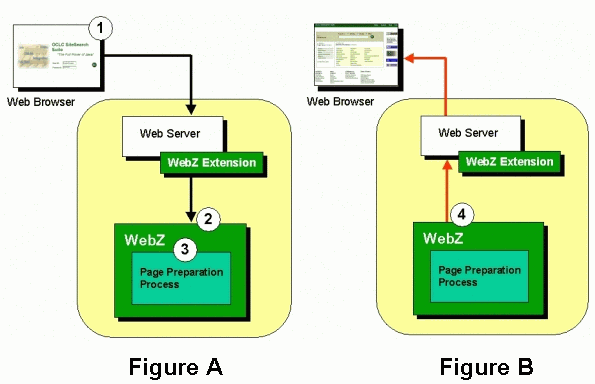The WebZ interface is generated through a variety of processes and interactions. Learning these processes is important if you wish to customize the interface to meet your needs. The following topics will introduce you to the concepts and topics you'll need in order to understand how the interface works. It is recommended that you read the topics in the order they appear below.
|
Topic |
Description |
|
This topic describes the pre-requisite knowledge and skills you should have in order to better understand how the WebZ interface works. You should read this topic before working with the interface. |
|
|
This topic illustrates and describes the four-step process by which WebZ generates the interface. This is a high-level description and provides a framework for understanding the overall process. |
|
|
This topic describes how the WebZ interface is generated by providing a detailed, step-by-step description of a WebZ session, from user logon to exit. This topic introduces you to every facet of the WebZ interface and how it works. |
The following is a list of pre-requisite knowledge and skills you should have in order to understand and work with the WebZ interface.
- You should know how to operate the WebZ system and should be familiar with the components in the WebZ system, their purposes, and their primary configuration files.
- You should know how to set trace levels in WebZ log files using ssadmin.
- You should have a general understanding of how web browsers and web servers interact using HTTP messages.
- You should have a working understanding of HyperText Markup Language (HTML) tagging structures, what HTML entities are and their syntax. You should also understand framesets and targets, the use of HTML forms, and the POST and GET methods.
- You should be familiar with the Java programming language and the concepts and nomenclature which underlie Java's object-oriented model.
How WebZ Generates the Interface
The WebZ interface is generated and displayed to the user in a process that involves the four overall steps shown in the Figures A and B below.

- Step 1 (Fig. A): The user submits a user request to WebZ in the form of an HTTP message.
- Step 2 (Fig. A). In the WebZ system, the JaSSI receives the HTTP message and begins the process of interpreting and executing the commands contained within it.
- Step 3 (Fig. A). JaSSI prepares a response to the user request using a process called page preparation. This process essentially builds an HTML page in response to the user's specific request. The response is in the form of an HTML page.
- Step 4 (Fig. B). JaSSI sends the response as an HTTP message to the web browser. The HTML page contained in the response is displayed in the browser.
Refer to Detailed Description of a WebZ Session for more information on how the WebZ generates the interface.